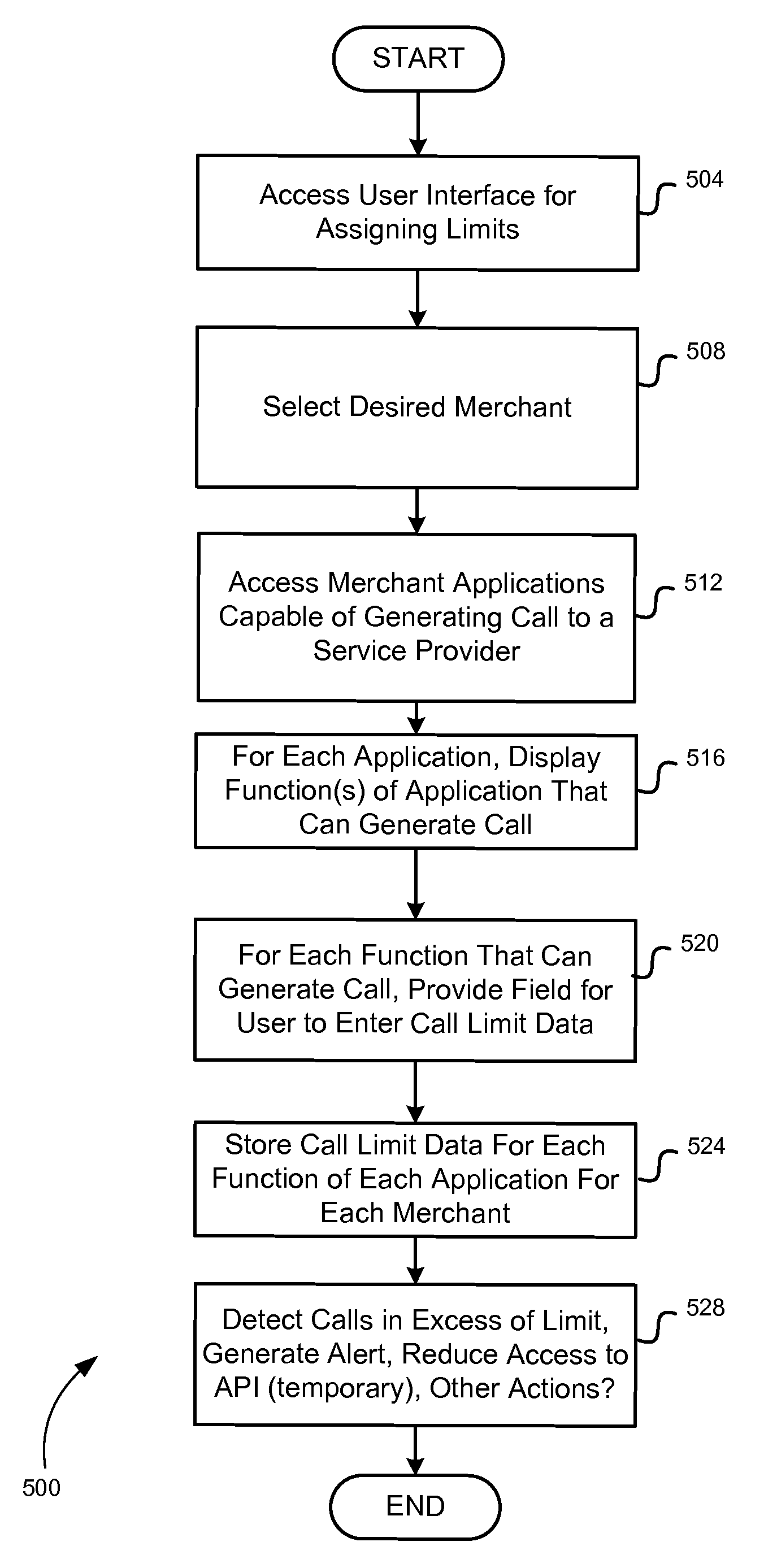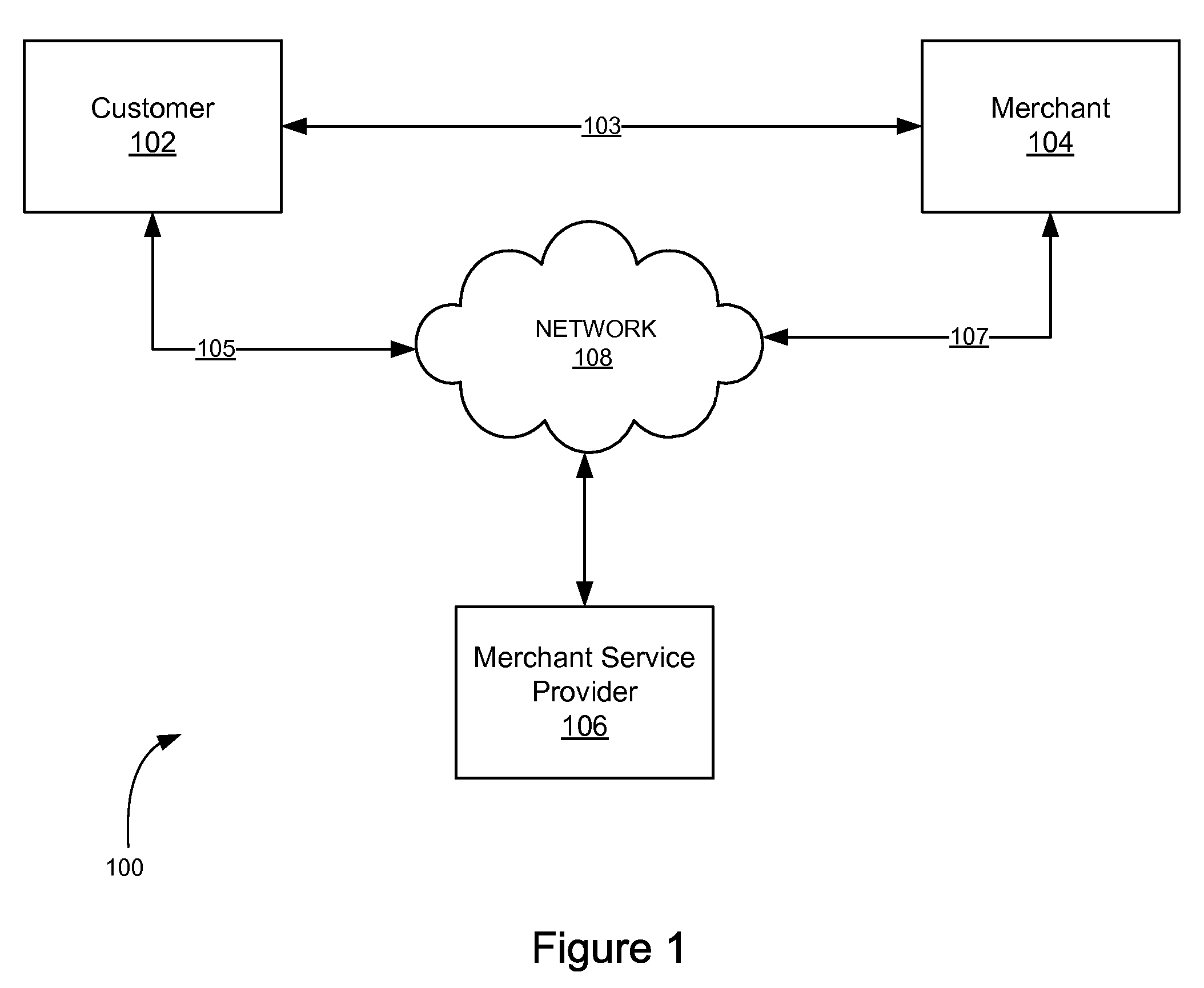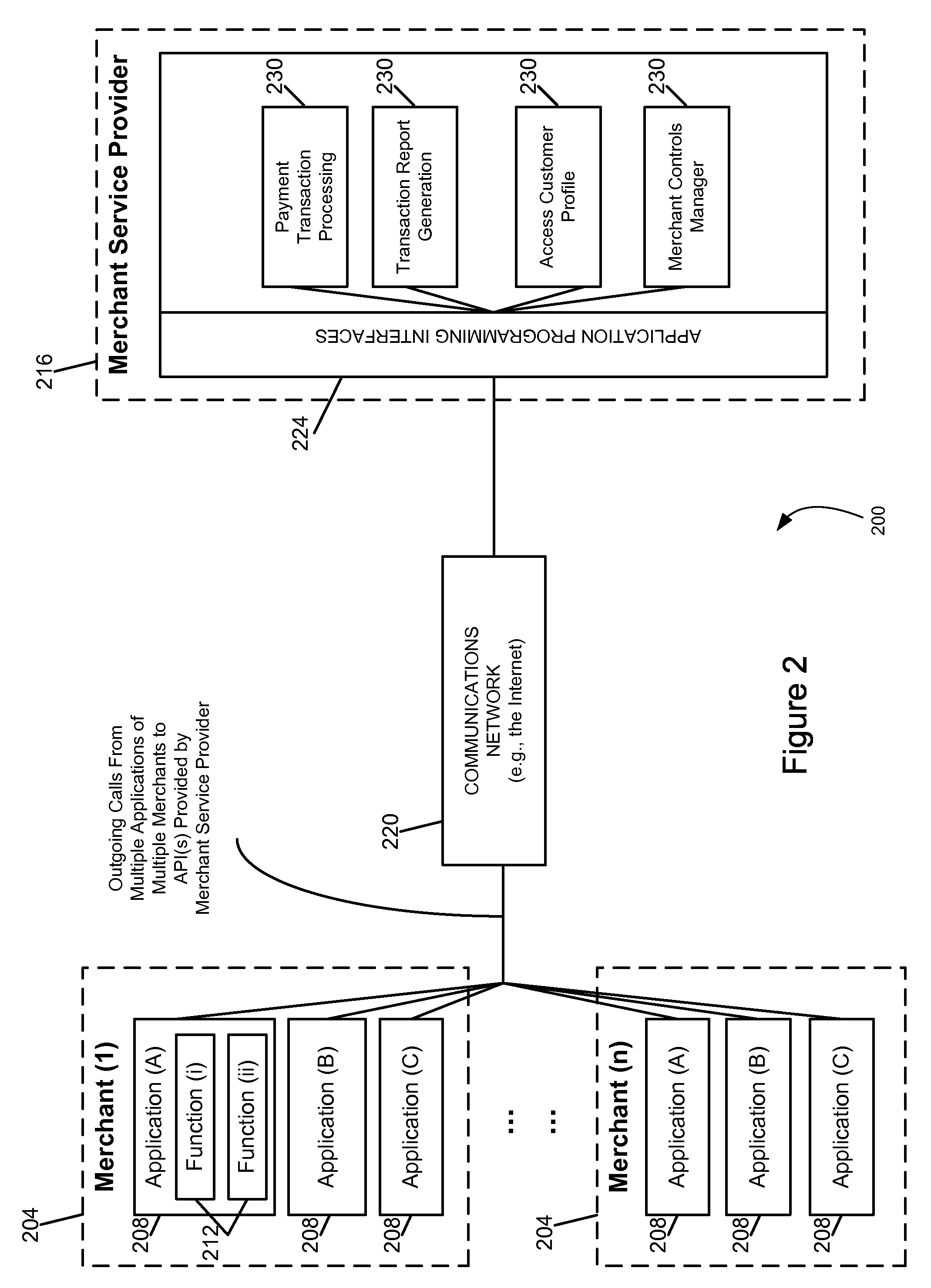Monitoring and limiting requests to access system resources
a technology of accessing system resources and monitoring requests, applied in the direction of data processing applications, instruments, marketing, etc., can solve the problems of affecting the performance of higher priority tasks, merchant applications making unreasonably high numbers of calls, and server overload, so as to achieve the effect of high priority data processing operations and negative impact on ability
- Summary
- Abstract
- Description
- Claims
- Application Information
AI Technical Summary
Benefits of technology
Problems solved by technology
Method used
Image
Examples
Embodiment Construction
[0023]Embodiments of the invention may be used to monitor the number, rate, or other characteristics of requests or calls made by one or more merchant applications to a service provider to ensure that requests for non-essential or lower priority services do not cause a disruption in the processing of higher priority services, such as payment transactions or other services that generate revenue. For example, when the number or rate of calls or requests for a lower priority data processing service exceed a threshold value, an alert may be generated and all subsequent such calls or requests may be rejected or processed at a reduced rate so as to comply with the threshold value. The merchant may be notified and in response conduct an investigation to determine if there is a malfunction within the merchant's data processing system or if the calls or requests were generated as part of a malicious act. In some embodiments, a merchant may be provided with a user interface that permits the m...
PUM
 Login to View More
Login to View More Abstract
Description
Claims
Application Information
 Login to View More
Login to View More - R&D
- Intellectual Property
- Life Sciences
- Materials
- Tech Scout
- Unparalleled Data Quality
- Higher Quality Content
- 60% Fewer Hallucinations
Browse by: Latest US Patents, China's latest patents, Technical Efficacy Thesaurus, Application Domain, Technology Topic, Popular Technical Reports.
© 2025 PatSnap. All rights reserved.Legal|Privacy policy|Modern Slavery Act Transparency Statement|Sitemap|About US| Contact US: help@patsnap.com



